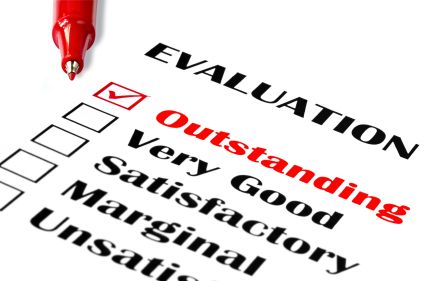Educational evaluation is the evaluation process of characterizing and appraising some aspect/s of an educational procedure.
Common purposes in educational evaluation:
- Educational institutions usually need evaluation data to demonstrate effectiveness to funders and other stakeholders, and to provide a measure of performance for marketing purposes.
- Educational evaluation is also a professional activity that individual educators need to undertake if they plan to continuously review and enhance the learning they are endeavoring to facilitate.
Standards for Educational Evaluation
The Joint Committee on Standards for Educational Evaluation published three sets of standards for educational evaluations.
- The Personnel Evaluation Standards, published in 1988
- The Program Evaluation Standards (2nd edition), published in 1994
- The Student Evaluations Standards, published in 2003.
Each publication demonstrates and elaborates a set of standards for use in a variety of educational settings. The standards provide guidelines for designing, implementing, assessing and improving the identified form of evaluation. Each of the standards has been placed in one of four fundamental categories to promote evaluations that are proper, useful, feasible, and accurate.
The Personnel Evaluation Standards
The propriety standards ask that evaluations be conducted legally, ethically, and with due regard for the welfare of evaluatees and clients involved.
The utility standards are designed to guide evaluations so that they will be informative, timely, and influential.
The feasibility standards call for evaluation systems that are as easy to implement as possible, efficient in their use of time and resources, sufficiently funded, and viable from a number of other standpoints.
The accuracy standards require that the obtained information be technically accurate and that conclusions be linked logically to the data.
The Program Evaluation Standards
The utility standards are intended to make sure that an evaluation will serve the information needs of intended users.
The feasibility standards are planned to ensure that an evaluation will be realistic, prudent, diplomatic, and frugal.
The propriety standards are intended to make sure that an evaluation will be conducted legally, ethically, and with due regard for the welfare of those involved in the evaluation, as well as those affected by its results.
The accuracy standards are intended to ensure that an evaluation will disclose and convey technically adequate information about the features that determine worth or merit of the program being evaluated.
The Student Evaluation Standards
The Propriety standards assist to make sure that student evaluations are conducted lawfully, ethically, and with regard to the rights of students and other persons affected by student evaluation.
The Utility standards encourage the design and implementation of informative, timely, and useful student evaluations.
The Feasibility standards help ensure that student evaluations are practical; viable; cost-effective; and culturally, socially, and politically appropriate.
The Accuracy standards help ensure that student evaluations will give sound, accurate, and credible information about student learning and performance.
